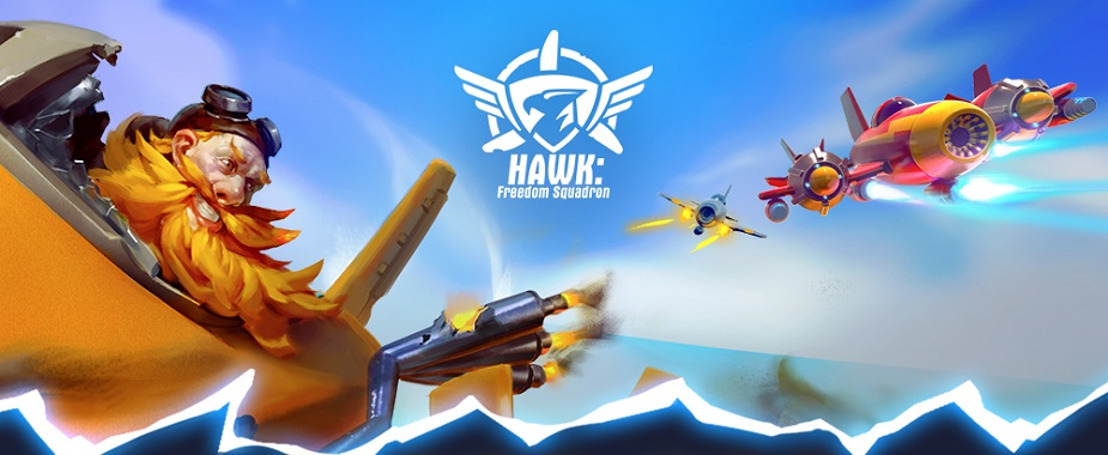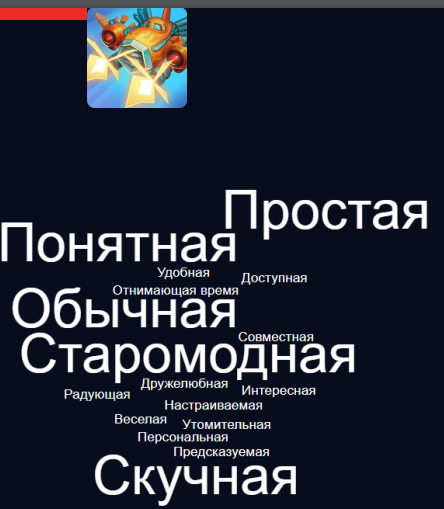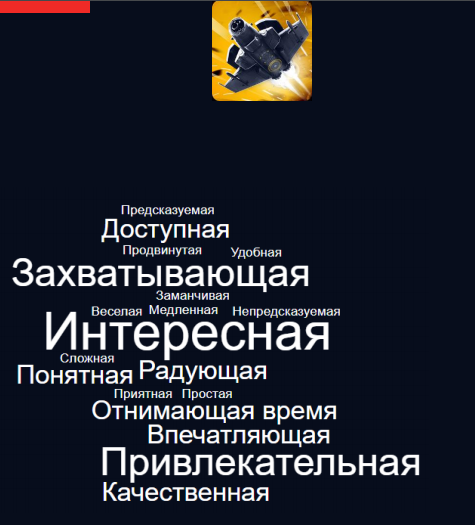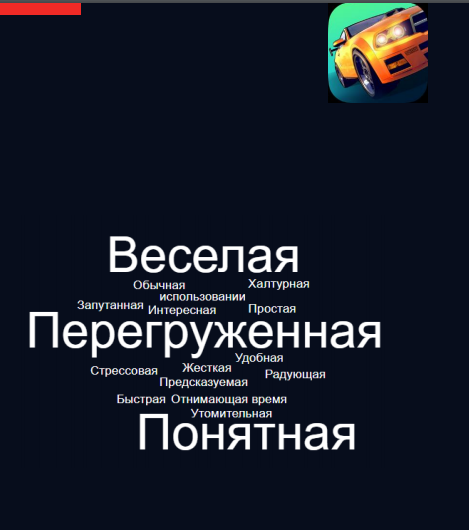"Your game is boring", or how to raise the already high retention of the first day

In this article I will talk about the introduction of "deep UX" in modern mobile development, thanks to which I managed to achieve substantial and sustainable growth Ret1. By deep UX, I mean a set of measures that is aimed at working not only with such usual things as information, predictability and convenience, but also with such subjective things as emotional involvement and retention.
This story began with an interview with the candidate for the developers of "Evolution 2: Battle for Utopia." As often happens at such meetings, we began to discuss the current product portfolio of my studio. And as an example of a successful project that was made in the studio recently, I mentioned the game HAWK in the shoot'em'up genre.
However, the candidate did not share my enthusiasm for this project and said that he was playing in HAWK and it seemed boring to him, but as an example of a correct joke, he brought one of our competitors who was less successful in the market.
Since I, as a game designer, participate in the creation of all our products, I’m very attentive to the opinions of the end users, so the review did not sink into oblivion, but settled in my "mind-shackles of reason", as often happens in such cases. For about a month I kept it in my head, periodically reflecting on the justice of the remark. On the one hand, I had a product with excellent performance and top-end revenue for this genre. On the other hand, the man said bluntly that our game is boring and gave preference to a competitor who earns much less than we do.
I wondered if there was a problem here that I could solve, or was it just a fluctuation and not worth paying attention to the review. The product is successful, retention rates are high, LTV is big, why take a steam bath?
Without finding the answer, I realized that I can close this gestalt only if I conduct comparative UX testing, since we have a serious attitude to UX and the necessary resources and knowledge for such studies are available.
The essence of the research was to find the ideal mood that users at the very beginning expect from the shoot'em'up genre. To do this, we decided to compare the user experience in our HAWK and two other competitors, about which we have heard many good reviews: Sky Force Reloaded and Fastlane: Road to Revenge.
All our respondents were asked to play each of the three games for 15 minutes in a different order. After each game, respondents filled out Game Experience Questionnaire and Microsoft Desirability Toolkit questionnaires, and then discussed with the moderator their impressions of the game.
The result of the study turned out to be very interesting and confirmed the information that the players perceived our game as the most boring among those proposed.



We also got a non-standard result on the scales of positive and negative impressions.

Despite the fact that HAWK has less positive impressions than the other two games, the negative impressions are also minimal. This speaks about the restrained and positive attitude of the respondents towards the game: although they didn’t get excited about it, HAWK caused less negative emotions than reference games.
Of particular interest was the combination of immersion, voltage and call characteristics. HAWK has received a very high score for immersion in the game (the ability to delay and hold players), although the stress and challenge are not rated very high.

Thus, I received statistics that confirmed the random review that I received during the interview. Despite the financial success of my product, its perception by the players was cooler compared to the games of its competitors.
I immediately saw for myself, as a producer, a possible point of growth. I thought about the fact that if you compensate for this cool perception at the beginning and keep the simplicity that favorably distinguished us from the competitors, you can increase the already high retention.
But what is a “reserved-positive” perception? How to turn it into a “delightfully positive” and at the same time maintain a minimum level of negative impressions, which our competitors failed to do?
I did not know the answer, so I invited the team to discuss this issue.
I still remember that discussion. Throughout my many years of practice, I went through countless grocery meetings, and it seemed impossible to surprise me. But at that time I was still surprised, because I categorically could not explain the essence of the problem being solved and turn it into specific tasks for each team member.
I was not able to quickly state the essence of the problem and reveal its importance, so the developers began to go into opposition and be limited to a formal approach. I think I would never have been able to convince the team if I didn’t do this playtest and not enlist the numerical measurements. Even "rationalists" could not ignore smaller indicators than those of competitors, even by abstract criteria like "stress" or "positive impression".
Having gone through a phase of rejection, we returned to a constructive discussion. However, it was impossible to break the problem into pieces and pull out a specific guide for each team member from it. Until we came to a very simple idea, which immediately turned into a clear plan.
The idea was based on the fact that in HAWK we learned how to hold and monetize a player for a unique period for the genre. Our LTV is built on a period of 6 months, which means that even after six months of play, people do not lose interest in the project and continue to pay. Therefore, we decided to focus on the experience that allowed us to hold the players for so long and exaggerate them at the very beginning of the game.
What exactly we altered, I will paint only tezisno, because, in fact, we redid everything. They removed the training level and made training in the framework of the progression of the first battle. Redesigned game narration to minimize interaction with non-combat interfaces in the first session. They changed the principle of opening abilities, from the very beginning to give them the opportunity to use them. Got and the initial airplane. Despite the fact that it should be the most unpretentious, we tried to preserve primitiveness, but added charisma and more dynamic shooting. And, of course, completely reworked all the first levels, taking into account new knowledge.
Since the problem we solved was rather abstract, and its criticality was unprovable, we made all these changes in parallel with the main development. It took us 3 months.
As a result, when the improvements were implemented, we collected the “anti-boring” version of the game and repeated the same UX research on it. What a joy it was when, by emotional involvement, we turned from outsiders into leaders! Now, no one tried to call the game boring, on the contrary, the respondents noted its attractiveness and dynamism, while not forgetting the simplicity that competitors lacked.

It was a victory! Everything said that the game has become better. But how much can this improvement improve the already good retention of the game, and is it even able to?
Initially, I was skeptical, because for 13 years in geymdeve many different projects passed through me and even more patches that were supposed to improve certain product indicators. But, looking back, I recall that I had never had any cases of improving the already good retention. All examples of retention increase known to me were associated with games that were low and increased, as a rule, due to technical optimization and correction of strong failures in the conversion funnel. But in our case the project was polished and did not contain any such flaws.
Therefore, when we implemented the changes and saw that the already good retention became even better, there was a feeling that we had completed some kind of superquest.
But this quest began with an interview, in which we received a random and extremely abstract review of the game, but did not dismiss it, but let us work, conducted a serious study, which ended with the formalization of our best expertise and its implementation.
When the game stopped being “boring”, we got +5 absolute percent to classic Ret1. With the preservation effect in the following days. This is the average effect across all territories and platforms:

As a result, we are even closer to creating the most commercially successful shoot'em'up on the market.
findings
This example is very indicative for me, since for the first time I managed to increase retention, working not with classical analytics, but with a user mood, with a deep UX. This is a completely different level of development, which is much more complicated and requires a special approach. But, despite its complexity, I believe that such an approach has a future.
I launched my first mobile game “Juggernaut: Revenge of Sovering” in 2012. Now I have 6 running titles and 3 are preparing to launch. And looking back, in 2012, I see what a huge path the industry has taken in these 6 years.
I see how much the technological and intellectual component has advanced in the development of mobile games, how much it has become more complex and branching. How many new specializations have been formed and how the density of knowledge has increased for each megabyte of content and for each attracted user.
But with all this, paradoxically, it sounds, it became much easier to make games. All the necessary technologies have become available to the ordinary user, the specialists who own them are also available in abundance on the market. Most genres are already formed, and their game mechanics are painted up and down. As for the new genres, they have now learned how to quickly prototype and test for live data. At the same time, a host of analytic tools and established practices for analytic support of the game appeared. Everyone already understands where and how to look, what is considered the norm, and what is the standard. All the knowledge necessary to create games is now in the public domain, which makes the game production process very fast and transparent.
But this medal has a downside: since knowledge is accessible to everyone, it is more difficult than now to somehow stand out from the crowd. Unlike 2012, today there are a lot of games and all of them are made at about the same level, both technically and in terms of gameplay. Therefore, to be successful in this business, it is no longer enough to make just good games, you need to be a cut above competitors. And for this we need knowledge that competitors do not have. But what kind of knowledge can it be, if everything is in the public domain, and what is not, can always be obtained using reverse engineering or primitive copying as is? I think it may be just knowledge in the field of deep UX. They belong to a very abstract domain of emotions, expectations, and other non-measurable constructs. Once received this knowledge, they can not be copied, as they are inextricably linked to a specific product. Therefore, this knowledge in itself is useless, only the methodology for obtaining and working with them has value. And those who learn to do this will be able to gain a very strong competitive advantage.
I want to say that deep UX is one of the last white spots in modern mobile development, and the one who masters it will be able to gain a competitive advantage for the next few years.
